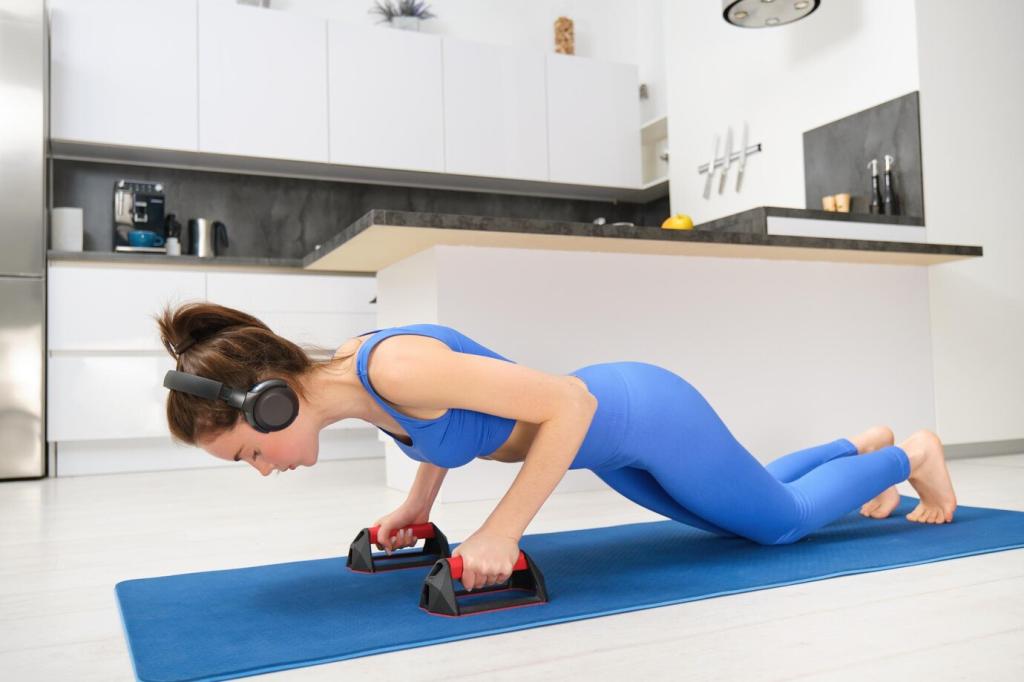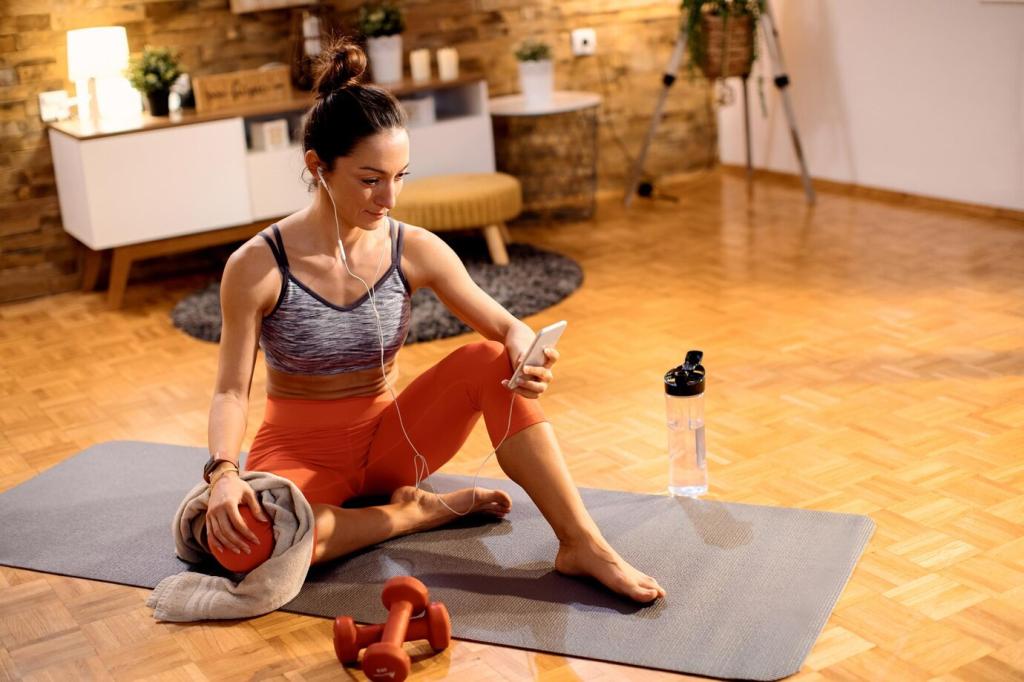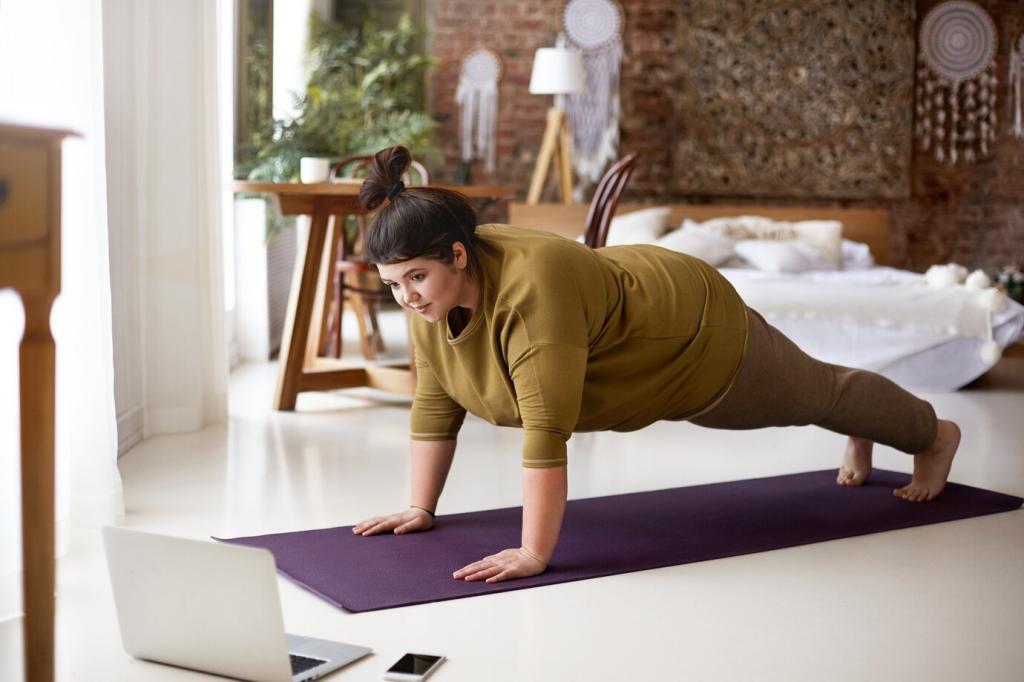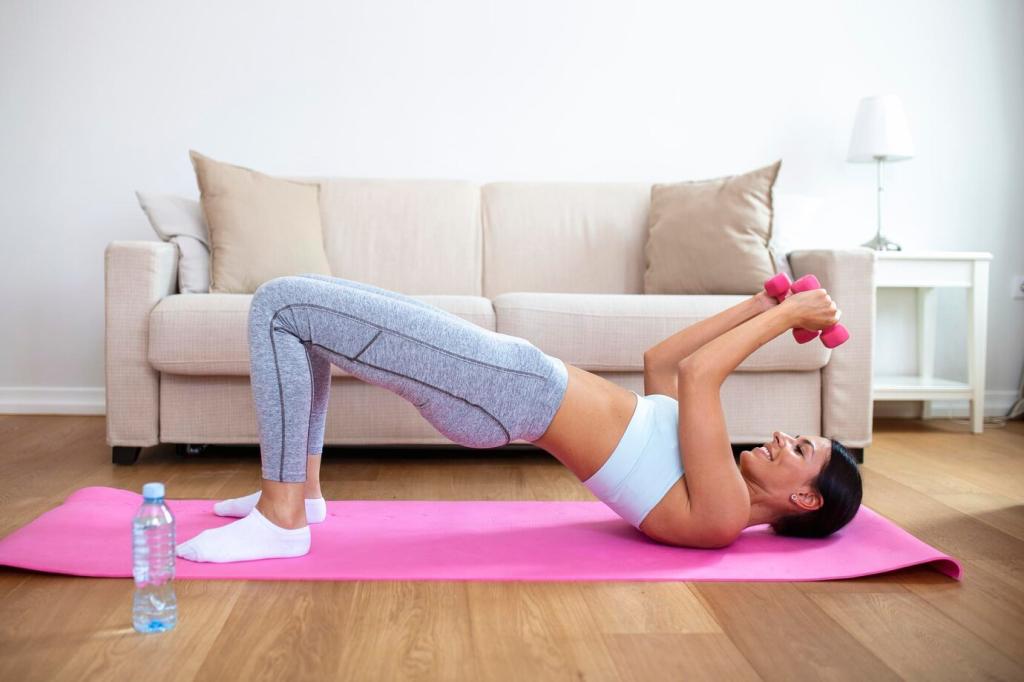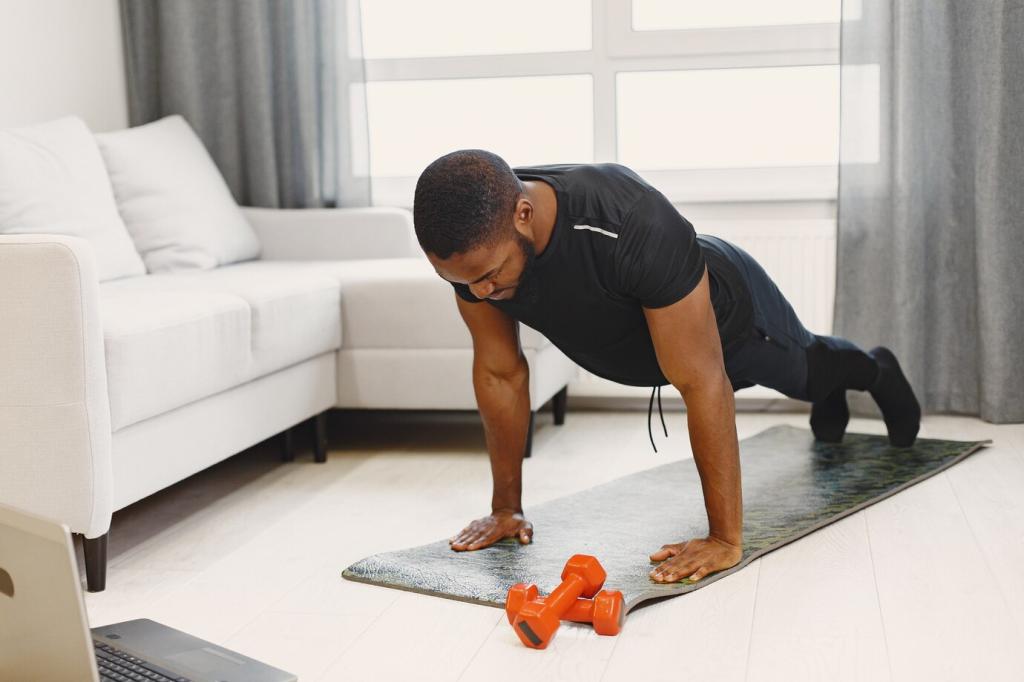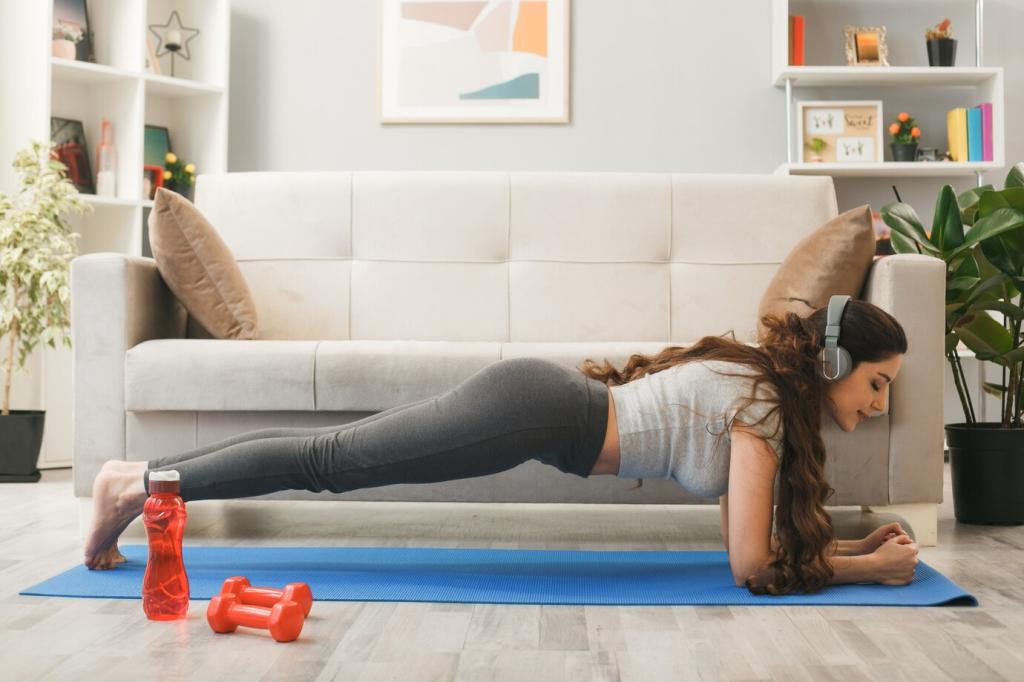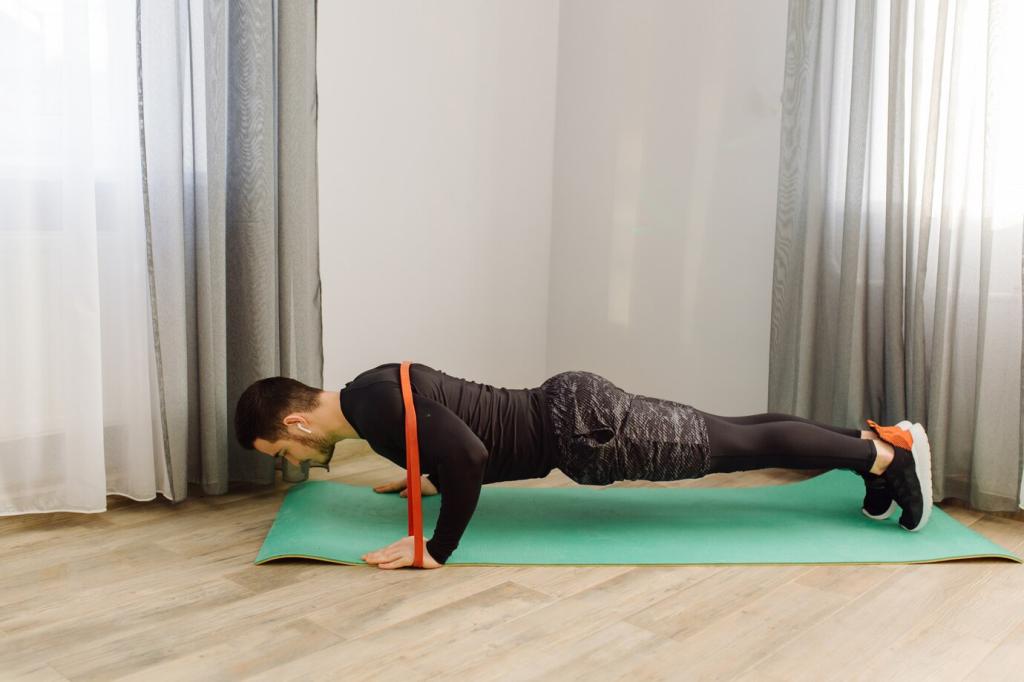Warm-Up, Mobility, and Recovery That Accelerate Progress
Spend five to eight minutes on marching, arm swings, hip circles, and light activation for glutes and core. Aim to raise body temperature and focus your mind. Begin the workout when movements feel smoother and breathing comfortable, not breathless.
Warm-Up, Mobility, and Recovery That Accelerate Progress
After sessions, walk slowly, breathe through your nose, and add gentle stretches for areas you trained. Two to three minutes of calm breathing helps your nervous system shift into recovery. Foam rolling is optional; comfort and consistency matter most.

